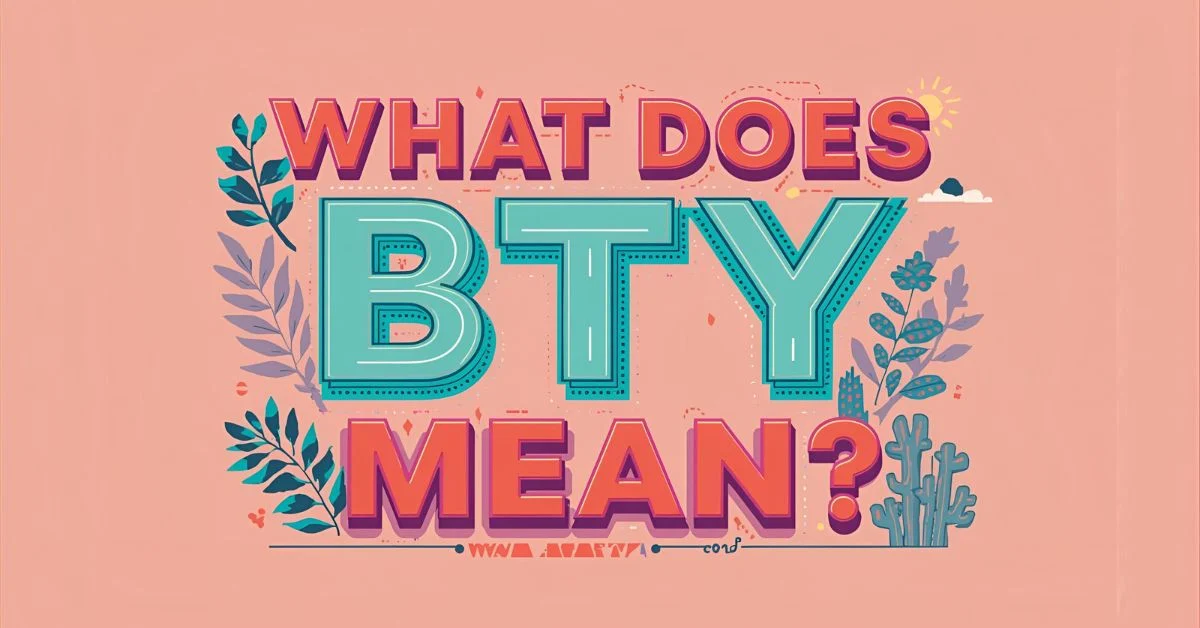In the age of instant messaging, social media, and texting, abbreviations have become an essential part of everyday communication. One of the most commonly used acronyms is “BTW.”
But what does BTW mean, and why has it become so popular?
Knowing this acronym is more than just a curiosity—it can help you communicate more effectively and avoid misunderstandings in both personal and professional settings.
Whether you’re reading a casual text from a friend, a tweet, or an email, recognizing and using “BTW” correctly can save time and add clarity.
In this guide, we’ll explore the meaning, origin, and various contexts of “BTW,” along with common mistakes and alternative phrases you can use.
By the end, you’ll confidently understand this shorthand and how it fits into modern communication.
Definitions & Meaning
BTW stands for “By The Way.” It is used as a conversational interjection to introduce additional information that may not be directly related to the main topic of discussion. Essentially, it’s a way of saying, “I just thought you should know” or “incidentally.”
For example:
- “I’ll be late to the party tonight. BTW, I brought your favorite snacks.”
- “BTW, did you finish the report?”
Its usage helps make communication more informal and friendly. Unlike full sentences, acronyms like BTW save time, making them perfect for fast-paced digital conversations. While it is casual, it can also appear in semi-professional contexts where a relaxed tone is acceptable, such as in Slack messages or friendly emails.
BTW is universally understood in English-speaking communities and has become a staple in digital literacy, showing how language adapts to technology.
Origins & History
The exact origin of BTW is somewhat murky, but it gained prominence alongside the rise of SMS texting in the 1990s and the early days of the internet. Abbreviations became popular as mobile devices had limited character counts, and users sought faster ways to communicate.
Before texting, people would use “by the way” in spoken and written English as a transitional phrase. As digital communication grew, acronyms like BTW, LOL (Laugh Out Loud), and BRB (Be Right Back) emerged to simplify messages. BTW became especially popular on chat platforms, forums, and early instant messaging apps like AIM and MSN Messenger.
The historical transition from formal language to digital shorthand shows how technology shapes language evolution. Today, BTW is recognized by most English speakers worldwide and has maintained its relevance in social media culture.
Usage in Different Contexts
Social Media: On platforms like Twitter, Instagram, or Facebook, BTW is often used to add side notes, opinions, or updates.
Example: “Loved your post! BTW, did you see the new trailer for the movie?”
Professional Communication: While less common in formal emails, BTW can be used in workplace chats or internal communications to add a casual note without breaking the flow of conversation.
Example: “Meeting is at 3 PM. BTW, the client requested an updated report before then.”
Pop Culture & Entertainment: BTW often appears in memes, captions, and dialogues in shows or online content, emphasizing casual and relatable speech.
Text Messaging: The most frequent context is personal texting. It helps convey additional thoughts without creating long messages.
BTW’s versatility across platforms shows its adaptability, making it a cornerstone of modern communication.
Common Misunderstandings & Clarifications
Some people confuse BTW with BTT (Back To Topic) or interpret it as a filler word with no meaning. However, BTW always implies introducing additional information or making a side comment.
Another common misconception is using BTW in overly formal settings. While technically correct, it may come across as unprofessional in formal reports, academic writing, or official correspondence.
It’s also sometimes overused, making conversations appear cluttered or casual unintentionally. Using BTW sparingly ensures your message remains clear and effective.
Alternatives & Synonyms
If you want variety or a slightly different tone, you can replace BTW with:
- “By the by” (archaic, humorous)
- “Incidentally” (formal)
- “Just so you know (JSYK)”
- “As an aside”
- “For your information (FYI)” (slightly more formal)
Each alternative has a slightly different tone, so choosing the right one depends on your audience and context.
Frequently Asked Questions (FAQ)
1. Is BTW informal?
Yes, BTW is generally considered informal but is widely accepted in casual professional settings like emails or chats.
2. Can I use BTW in professional emails?
Yes, but it should be used carefully and in contexts where a casual tone is acceptable.
3. Does BTW have other meanings?
While “By The Way” is the primary meaning, in niche contexts, acronyms may vary. Always rely on context.
4. How do you pronounce BTW?
People usually say it as “bee-tee-double-u” in speech, but it can also be read as “by the way” when understood.
5. Is BTW used globally?
Mostly in English-speaking countries, but with the global influence of social media, it is widely recognized worldwide.
6. Should I overuse BTW?
No, excessive use may make your writing seem too casual or cluttered. Use it sparingly for clarity.
7. Are there emojis that can replace BTW?
Not exactly, but 💬 or 🔔 can sometimes convey a side note or reminder, though they are more symbolic than a direct replacement.
Conclusion
Understanding BTW is essential in modern communication.
From its origins in texting to its widespread use on social media, it has become a quick and efficient way to introduce additional information.
Whether in casual chats, semi-professional messages, or pop culture references, BTW helps maintain a friendly and concise communication style.
Being aware of its proper use, alternatives, and context ensures you use it effectively without confusion.
Next time you see BTW in a message, you’ll know exactly what it means—and how to use it yourself.

